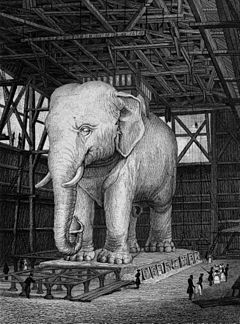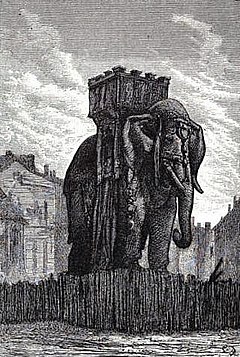
Back فيل الباستيل Arabic فيل الباستيل ARZ Elefant de la Bastilla Catalan Bastilský slon Czech Bastilleelefanten Danish Elefant der Bastille German Bastila Elefanto Esperanto Elefante de la Bastilla Spanish Bastille' elevant Estonian Éléphant de la Bastille French




The Elephant of the Bastille was a monument in Paris which existed between 1813 and 1846. Originally conceived in 1808 by Napoleon I, the colossal statue was intended to be created out of bronze and placed in the Place de la Bastille, but only a plaster full-scale model was built. At 24 m (78 ft) in height, the model itself became a recognisable construction and was immortalised by Victor Hugo in his novel Les Misérables (1862) in which it is used as a shelter by the street urchin Gavroche. It was built at the site of the Bastille and, although part of the original construction remains, the elephant itself was replaced a few years later by the July Column (1835–40) constructed on the same spot.